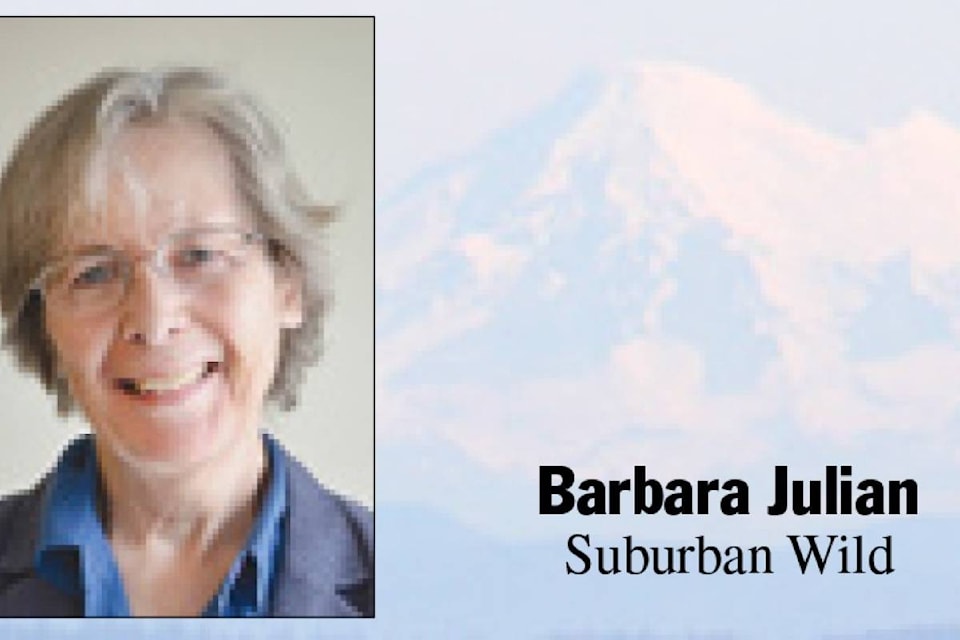There are 30 species of land mammals living on Vancouver Island, while almost 60 exist on the Mainland. Why have barely half established themselves here? Despite our preoccupation with native species, we know that everything came from somewhere and that constant migration is Nature’s way. What determines how much diversity an island gets?
Locally we have squirrels, mice, shrews, mink, raccoons and otters, so why not chipmunks, porcupines, skunks and moles? Cougars edge into suburbia, but coyotes, foxes and lynx have not. According to biologists island ecology and continental ecology are different things: species arrive in an environment when there’s a niche available, and it makes sense that the smaller the area the fewer the niches. Generalists, say the experts, do better than specialists, which may die out before their population reaches a critical mass because their food needs are specific and harder to fill.
Somtimes though something odd happens, like the arrival of the Discovery Island wolf off Oak Bay – although that wasn’t the first wolf, as one appeared on Sidney Island in 1984 and another on Saturna in 2000. This one however seems to have no plan to leave.
European and Eastern cottontail rabbits, both introduced species, thrive in Oak Bay and the rest of the Southern Island, yet skunks haven’t managed to take hold. Skunks, I’m told, used to keep warm in root cellars under houses up the Mainland coast, nesting on top of sacks of carrots. Maybe here that crawl-space niche has been filled by rats. Nature’s ways are mysterious, and we can only assume she knows what she’s doing when she lets a species becomes naturalized in an area. If it thrives it belongs and becomes “native”, the grey squirrel being a case in point.
American martens still exist, but they keep to Sooke and other (so far) wild areas. While the bold raccoon tolerates our presence in its native environment, the Vancouver Island marmot is much too shy for city life. While deer thrive in suburban gardens, the once-plentiful elk are to big, too wild, too wary.
Some animals are just more social than others: beavers seem to be re-establishing themselves even in Vancouver wherever there’s a pond or inlet available – but not here. Oak Bay’s too dry, but when Bowker Creek still had tributaries and marshy borders beavers did live here. They are one of the lost and absent ones, sadly enough in this year of Canada’s 150th birthday. It was in 1851 that the beaver was first chosen for a Canadian postage stamp, and 1975 when we passed the Act that recognized the beaver as the symbol of Canada’s sovereignty.
A good symbol they are, being independent, creative, cooperative and hardworking, fashioning their wetland environments to suit their own housing needs and family life. Had Bowker Creek survived as a healthy stream fully daylighted and unmolested by development, the fauna of Oak Bay and Saanich would be very different today. Elk too might have survived. Just where Bowker curves through suburbia toward one of its ignominious tunnels, I found a vertebra obviously not from a dog or cat species, and too big for a deer. An elk bone! One of the long-gone ghosts had left a material sign of its passing through these parts, which now sits on my shelf. It’s a fetching reminder of the wild past, back when Oak Bay teemed with non-human life.
Barbara Julien is a local writer and nature enthusiast who writes monthly about the various species making their home in Oak Bay.
